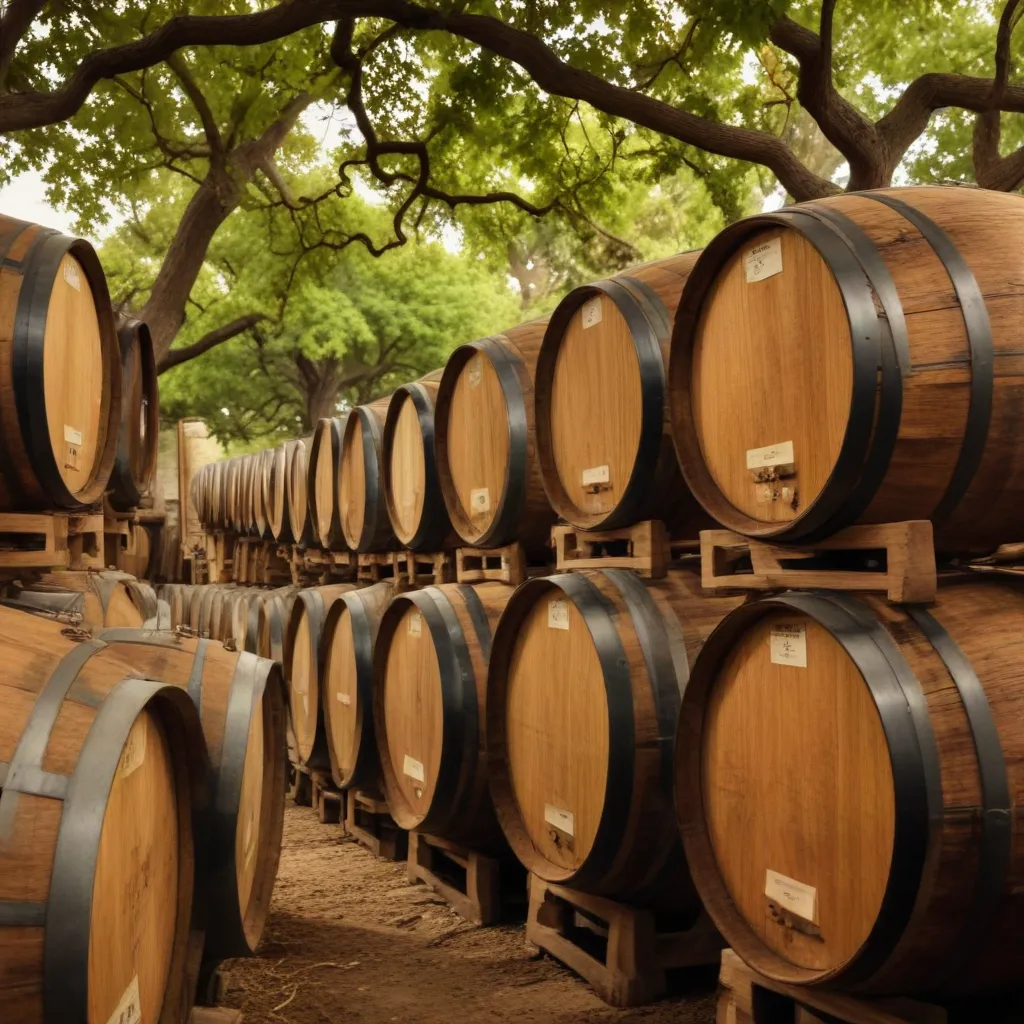
Oak aging is a cornerstone of winemaking, imparting distinctive flavors, textures, and aromas to the final product. However, there are numerous misconceptions surrounding the role of oak in wine production. As a hospitality and wine expert, I’m here to uncover the truth behind these common myths and shed light on the evolving practices of oak aging.
The Influence of Oak
Oak barrels have long been a hallmark of premium winemaking, with their ability to subtly transform a wine’s profile. The interaction between the wine and the wood results in the incorporation of tannins, vanilla, spice, and toasted notes that can complement a wine’s natural fruit flavors. This oak influence can range from a delicate touch to a more pronounced presence, depending on the winemaker’s intended style.
The duration and type of oak maturation also play a crucial role. Longer aging in new oak barrels, for instance, will impart a more intense oakiness, while older or used barrels contribute a more subtle, integrated oak character. Winemakers may also employ techniques like micro-oxygenation or the use of oak staves and chips to achieve desired oak integration without the need for full barrel aging.
The Role of Oak in Wine Flavor
Oak aging is not just about the tangible presence of oak flavors. It also serves to soften a wine’s tannins, enhance its mouthfeel, and contribute to the overall complexity and balance of the final blend. The porous nature of oak barrels allows for a gradual oxygenation of the wine, which can aid in the development of secondary and tertiary aromas over time.
Debunking Oak Aging Myths
Despite the profound impact of oak on winemaking, there are several misconceptions that persist. Let’s explore and debunk some of the most common myths surrounding oak aging.
Myth: Oak Aging Imparts Excessive Tannins
One prevalent myth is that oak aging invariably leads to overly tannic wines. While it’s true that oak barrels can contribute tannins to the wine, the degree of tannin extraction is largely dependent on the winemaker’s careful management of the process.
Skilled winemakers understand the nuances of oak tannins and can leverage them to enhance a wine’s structure and mouthfeel without allowing them to dominate the overall profile. Through techniques like micro-oxygenation and the judicious use of older or neutral oak barrels, they can achieve a balanced and harmonious integration of tannins.
Myth: Oak Aging Masks Grape Varietal Character
Another common misconception is that oak aging suppresses or overpowers the distinctive characteristics of a grape variety. While it’s true that oak can contribute its own set of flavors, a talented winemaker can carefully calibrate the oak influence to complement and accentuate the inherent qualities of the grape.
For instance, the subtle vanilla and spice notes from oak can beautifully enhance the bright fruit flavors of a Pinot Noir, while the toasted oak aromas can provide a captivating backdrop for the earthy, terroir-driven profile of a Cabernet Sauvignon. The key is finding the right balance between the grape’s varietal character and the oak’s influence.
Myth: All Oak Aged Wines Taste the Same
The misconception that all oak-aged wines share a homogeneous flavor profile stems from a lack of understanding of the nuances in oak aging practices. In reality, the specific type of oak (French, American, Hungarian, etc.), the level of toasting, and the duration of aging can result in vastly different flavor outcomes.
A Chardonnay aged in heavily toasted, new French oak will have a markedly different character than one that has been matured in neutral, older barrels. Similarly, a Merlot fermented and aged entirely in oak will present a distinct profile compared to one that has been only partially oak-aged and blended with unoaked components.
Understanding Oak Alternatives
While traditional oak barrels remain a staple in premium winemaking, the industry has also embraced various oak alternatives to achieve specific flavor profiles or address sustainability concerns.
Oak chips and oak staves offer winemakers greater control and flexibility in imparting oak character, without the significant investment required for full barrel aging. These alternatives can be used to introduce oak-derived compounds at different stages of the winemaking process, allowing for a more targeted and measured approach.
Another innovative technique is micro-oxygenation, which simulates the gentle oxygenation that occurs through the porous nature of oak barrels. This method can help soften tannins, enhance mouthfeel, and contribute to the wine’s integration and complexity without the use of oak at all.
The Evolution of Oak Aging Practices
The application of oak in winemaking has evolved over time, reflecting both historical traditions and modern advancements in the industry.
Historically, oak barrels were the primary vessels for wine maturation, with winemakers relying on their ability to impart depth and complexity to the final product. However, as sustainability concerns have risen, the industry has sought to find more eco-friendly alternatives, such as using recycled or certified sustainable oak, as well as exploring the use of alternative wood species.
Today’s winemakers are also more mindful of the specific oak toasting levels and seasoning processes, understanding how these factors can impact a wine’s flavor profile. Additionally, the emergence of custom-designed oak alternatives allows for a greater degree of customization and precision in oak integration.
As we delve deeper into the world of oak aging, it’s clear that the myths surrounding this integral aspect of winemaking are being steadily debunked. By understanding the nuanced role of oak and embracing the evolving practices in the industry, we can better appreciate the art and science behind crafting exceptional, oak-aged wines.
At Wine Garden Inn, we are committed to showcasing the finest examples of oak-aged wines, with a particular focus on highlighting the unique characteristics of each varietal and the winemaker’s artful touch. Join us on this journey of wine discovery as we continue to uncover the truth behind the myths and celebrate the ever-evolving world of oak aging.
